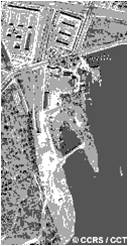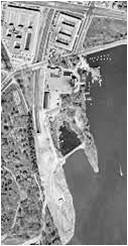Recent Comments
Archives
Categories
- No categories
Meta
5.6. Radiometric and Temporal Resolution
Objectives
This learning object considers two further aspects of resolution in remote sensing: radiometric and temporal resolution.
Radiometric Resolution
The number of unique values that can be recorded by a sensor when measuring reflected or emitted electromagnetic radiation is quantified as a number (e.g. 256, 2047, etc.) expressed in bits. The higher the radiometric resolution, the better the quality of the data. Bits are expressed as powers of 2, starting from 0
1 bit = 21, in other words the sensor can record values of 0 and 1
2 bit = 22, the sensor can record values of 0, 1, 2 and 3
3 bit = 23 = 8
Similarly, an 8 bit sensor can record values from 0 to 255 (because 28 = 256)
The effects of changing the bits available for storage of a conventional photograph can be seen in the examples below, which represent 256, 4 and 2 shades between white and black



(Image source: David Martin)
Temporal Resolution
Temporal resolution refers to the shortest period of time in which a sensor will revisit, or pass over, the same spot on the surface of the Earth. Because there is some degree of overlap in the imaging swaths of adjacent orbits of most satellites and this overlap increases with increasing latitude, some areas of the Earth tend to be re-imaged more frequently than others – overlaps are shown by the yellow areas in the map below. Landsat has a temporal resolution of 16 days, whereas AVHRR has a temporal resolution of just 12 hours. The temporal interval is strongly related to the type of orbit of the platform.

(Image source: CCRS)
Reflection
Which of the following images has the higher radiometric resolution?


Show Answer